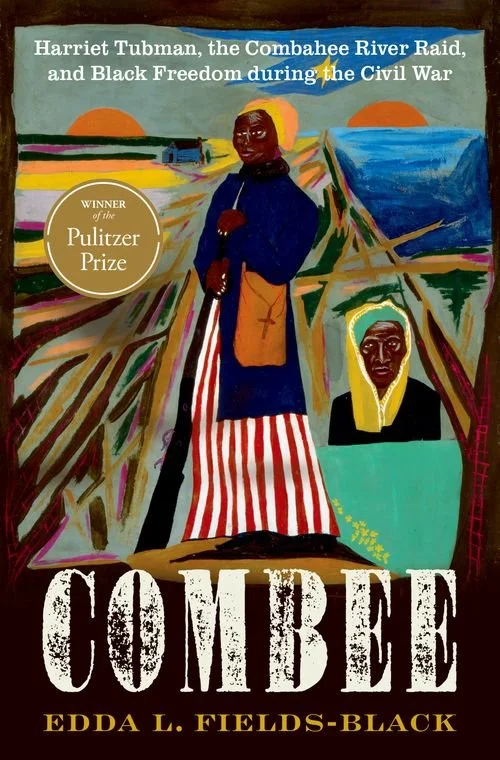COMBEE: Harriet Tubman, the Combahee River Raid,
and Black Freedom during the Civil War
WINNER - 2025 Pulitzer Prize in History
WINNER - 2025 Gilder Lehrman Lincoln Prize
WINNER - 2025 Tom Watson Brown Book Award
WINNER - 2024 South Carolina Historical Society's George C. Rogers Jr. Award
WINNER - 2024 Marsha M. Greenlee History Award
HONORABLE MENTION - 2025 James A. Rawley Prize
FINALIST - 2025 Mark Lynton History Prize
FINALIST - Association for the Study of African American Life and History Book Prize
"The Best Nonfiction Books of 2024," Bloomberg.com
"Also Recommended" among the "Best Books of 2024," The New Yorker
"Best Civil War Books of 2024," Civil War Monitor
"Top 10 History Books: 2024," Booklist
Oxford University Press Best "Books of 2024"
Most Americans know of Harriet Tubman's legendary life: escaping enslavement in 1849, she led more than 60 others out of bondage via the Underground Railroad, gave instructions on getting to freedom to scores more, and went on to live a lifetime fighting for change. Yet the many biographies, children's books, and films about Tubman have less to say about a crucial chapter of Tubman’s life: during the Civil War, hired by the Union Army, she ventured into the heart of slave territory--Beaufort, South Carolina--to live, work, and gather intelligence for a daring raid up the Combahee River to attack rice plantations in the South Carolina Lowcountry, a breadbasket of the Confederacy.
Edda L. Fields-Black--herself a descendent of one of the formerly enslaved men who fought in the raid--shows how Tubman commanded a ring of spies, scouts, and pilots and participated in military expeditions behind Confederate lines. On June 2, 1863, Tubman and her crew piloted two regiments of Black US Army soldiers, the Second South Carolina Volunteers, and their white commanders up coastal South Carolina's Combahee River in three gunboats. In a matter of hours, they torched seven rice plantations and liberated 756 people, people whose Lowcountry Creole language and culture Tubman could not even understand. Black men who had liberated themselves from bondage on South Carolina's Sea Island cotton plantations after the Battle of Port Royal in November 1861 enlisted in the Second South Carolina Volunteers and risked their lives in the effort.
Using previous unexamined documents, including US Civil War Pension File, bills of sale, wills, marriage settlements, and estate papers from planters' families, Fields-Black brings to life intergenerational, extended enslaved families, neighbors, praise-house members, and sweethearts forced to work in South Carolina's deadly tidal rice swamps, sold, and separated during the antebellum period. When Tubman and the gunboats arrived and blew their steam whistles, many of those people clambered aboard, sailed to freedom, and were eventually reunited with their families. The able-bodied Black men freed in the Combahee River Raid enlisted in the Second South Carolina Volunteers and fought behind Confederate lines for the freedom of others still enslaved not just in South Carolina but Georgia and Florida.
After the war, many returned to the same rice plantations from which they had escaped, purchased land, married, and buried each other. In the early 20th century, the formerly enslaved people on the Sea Island cotton and indigo plantations, together with those in the semi-urban port cities of Charleston, Beaufort, and Savannah, and on rice plantations in the coastal plains, created the distinctly American Gullah Geechee dialect, culture, and identity--perhaps the most significant legacy of Harriet Tubman's Combahee River Raid.
ORDER A COPY:
COMBEE: Harriet Tubman, the Combahee River Raid, and Black Freedom during the Civil War is now available as an audiobook!
Narrated by Machelle Williams




